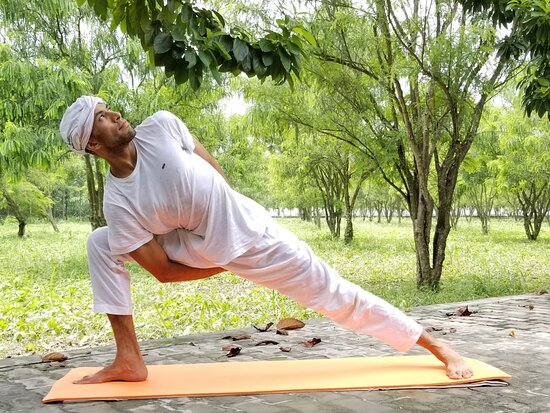
Sanskrit means "unite" or "join". Yoga's origins are from Sanskrit. This union refers both to a union between mind and body and the union of individual consciousness and universal consciousness. In the early centuries of the 20th century, yogic practice was practiced throughout India. The first known yogi was Lord Shiva, who disseminated it through his writings. These books were translated into many languages and distributed to different regions around the globe.
Yoga began to gain popularity in Europe as a popular practice. In the early 1900s VHS tapes and DVDs were popularized, which led to widespread distribution of yoga videos. The boom in fitness and the Internet made yoga a popular practice. Yoga spread fast and widely due to this. In the 1990s the transatlantic flight and the microphone made it possible reach large audiences and spread ideas far and wide.
The history of yoga dates back thousands upon thousands of years. It was practiced for spiritual purposes, but it only came to the attention of Westerners during the mid-19th century. Swami Vivekananda was an Indian monk who traveled throughout Europe and the U.S. in order to spread the practice. He eventually taught yoga to the West, where it has been popularized in modern times. This is a great way to learn more about yoga's history.

Yoga's roots can be traced back to northern India in ancient times. The Vedas (the oldest of the four Vedas) contain references to the practice. The Rig Veda is home to over 1000 hymns as well as 200 mantras. The Rig Veda was used by priests of the Vedic age to learn about the different positions and postures of yoga. Many Rishis improved the practice over the centuries and brought it to the present day. The Upanishads, another excellent source of information, provide a wealth of historical information about yoga.
The first mentions of yoga were in ancient India. This is the beginning of the history of yoga. The practice evolved to include physical postures, also known as asanas. Hatha yoga gained popularity in the U.S. around the turn of the 20th century, when many teachers began adding asanas onto their classes. The 1970s saw the popularity of the practice, and it gained mainstream acceptance throughout the world. The birth of yoga in the United States fueled its popularity and spread.
Yoga has a complex history. Yoga dates back to 2000 BC. At that time, the practice was primarily concerned with the mind. Later, western gymnastics influenced the practice and the first Hathayoga practices were created. In the 1920s, Hatha yoga was developed. This form of yoga is more body-centered. Asanas can be used today to help achieve this goal.
The roots of yoga's origins lie in ancient India. Yoga was practiced thousands of year ago and was vastly different from Vinyasa yoga classes today. It is possible to learn more about the history of yoga and better understand it. It is important to note that ancient yoga was not the same practiced as modern-day Yoga. You can trace back thousands of year to the origins and gain a deeper understanding of Yoga.

The rich history of yoga has a rich tradition in yogic practices. While the Hindu culture was predominant among ancient yogis, it had a strong influence on them. Yoga was generally banned in the west because of its British origins. It wasn't until then that yoga became popular in Europe and America. Yoga was introduced to the United States by Indian gurus in the late 1800s. Asana, a form of meditation, is one example.
Asana is the foundation of most yoga practices. Asana is an ancient practice. The practice of yoga was spiritual and religious at its best in the 5th Century. Jainism and Buddhism were also considered ancient religions. The Classical Period witnessed the first systematic presentation and explanation of yoga practices and beliefs in Hinduism or Jainism. The popularity and influence that yoga enjoyed over the centuries was never diminished. But as with any new practice, the roots of it are still rooted in the same principles and ideals.
FAQ
What is a good 7-day workout schedule?
Three days per week should be spent on cardiovascular training, including running, biking, swimming, and two strength exercises using free weights, weight machine, as well as one flexibility/core exercise such as yoga, Pilates. Each activity should be done at least once per week. Each session should last no more than 45 minutes.
Cardiovascular Exercises: Running, biking, swimming
You should aim to get at least 60 mins of cardio exercise per week. You can aim for 75 minutes a week for best results. Cardio exercise can stimulate blood flow and increase muscle growth.
Strength Training
While cardio exercises target the heart and lungs, strength training targets the muscles and bones. Strength training helps you burn calories even while resting.
Flexibility & Core Workouts
Flexibility and core workouts are great ways to strengthen your entire body. Both yoga and Pilates are excellent options.
What is the best way to lose weight?
Losing weight can be difficult. Many people give up easily because they don't know what to do.
You can lose weight by following a few simple steps.
First, make sure you eat less calories than you burn. You will gain weight if you eat more calories than you burn.
For all of those extra calories to be burned, it is important that you exercise regularly. You can choose from different types of exercises, including jogging, walking, cycling, dancing, etc.
Third, you need to stop drinking alcohol and smoking cigarettes. These habits make it more likely that you will consume more calories than you would normally.
Fourth, it is important to reduce the consumption of junk food and fatty foods. You can replace them by healthier choices such as fruits, vegetables or lean meats.
Fifth, it is important to make lifestyle changes and develop new habits. It is possible to wake up at 5 AM to go to work, or to be more active before you get to work.
Sixth, discipline and following a diet plan are essential.
You can also burn excess calories by joining a gym, or taking an aerobics course.
You will quickly notice the difference by following these simple tips.
Is Egg good for man?
The egg has all the nutrients the body requires. It helps to maintain strong bones and healthy hearts and lungs and stabilize blood pressure.
Eggs are rich in protein, vitamin A, B12 and D,E,K, as well as vitamins A,B12 and D,E,K, calcium, iron, phosphorus, manganese, copper, magnesium, and riboflavin.
The cholesterol content of egg yolks is high. However, it does not contain saturated fat. Eggs have less saturated fat than many other foods.
They are also low-calorie and high in sodium. They can also be prepared in many different ways. They can be fried, poached, scrambled, boiled, hard-boil and baked.
They are very healthy and simple to make.
You should eat at least two whole eggs per day. You don't have to eat eggs.
Eggs are a good source of essential nutrients for our bodies. You can add eggs to your daily diet now.
Can I drink alcohol while exercising?
Yes. Alcohol increases energy expenditure, speeds up recovery times, and reduces soreness.
Additionally, alcohol can increase insulin sensitivity and make it easier to absorb glucose.
Alcohol can also cause dehydration which can lead to a slower metabolism. You may also experience a reduction in testosterone production which can lead to decreased muscle-building potential.
It is important that women refrain from drinking alcohol before they exercise. Women who have consumed a lot of alcohol should wait at most 24 hours before working out.
Nursing mothers should abstain from alcohol as much as they can.
Men should limit their intake to one drink per day.
Statistics
- By John Thompson Take a whopping 38% off a set of PowerBlock Pros. (menshealth.com)
- According to the American Academy of Dermatology (AAD), men over 50 are at a heightened risk of developing it. (healthline.com)
- 10 pounds in a month is likely during a lean bulking phase, especially for beginners. (muscleandstrength.com)
- The PRS enabled risk stratification for overall prostate cancer and lethal disease with a four-fold difference between men in the highest and lowest quartiles (HR, 4.32; 95% confidence interval [CI], 3.16-5.89). (pubmed.ncbi.nlm.nih.gov)
- Are You One of the 20% of Guys (mh.co.za)
External Links
How To
How to Eat Well For Men?
Instead of eating three large meals a day, eat small meals. A smaller meal means you spend less time digesting the food. Later you will be less likely to overeat.
Avoid snacks before bedtime. If you snack late at night, you will wake up hungry and eat more the next day.
A light snack is a better choice.
Avoid snack attacks where you grab something every time you feel hungry. This is especially harmful if you are already overweight.
You should ensure that your meals are balanced. Skip breakfast for lunch and dinner.
Losing weight can be achieved by cutting back on calories.
You can cut out caffeine, alcohol, and nicotine. Both can affect how your body processes nutrients.
Get enough sleep. Sleep deprivation makes people crave junk food.
Exercise regularly. Exercise can boost your mood, improve energy levels, and reduce calories.
Take care of yourself mentally. Overeating can lead to weight gain.
Learn to relax. Meditation and yoga are great ways to relieve stress and anxiety.
Keep track of what you eat. Write down everything that goes into your mouth.
Supplements are important! Most men don't take enough vitamins and minerals to stay healthy.
Daily multivitamin intake is recommended. A daily multivitamin can help you avoid deficiencies in certain vitamins and minerals.
Consider taking a vitamin D supplement. Vitamin C helps prevent scurvy and strengthens your immune system.
Include zinc in your daily diet. Zinc deficiency can cause impotence.
Get enough water. Keep your fluid intake above 1.5 liters (about 4 cups) daily.
Limit salt. Limit sodium intake.
Stay away from trans fat. Trans fat has been linked with higher obesity, diabetes and heart disease rates.
Best Male Enhancement Products for 2018 – Best Male Enhancement Tablets Reviews
There are many different types of male enhancement products available today. Some products work well while others provide no real results. This article aims to give you some information about the best male enhancement pills that actually work.